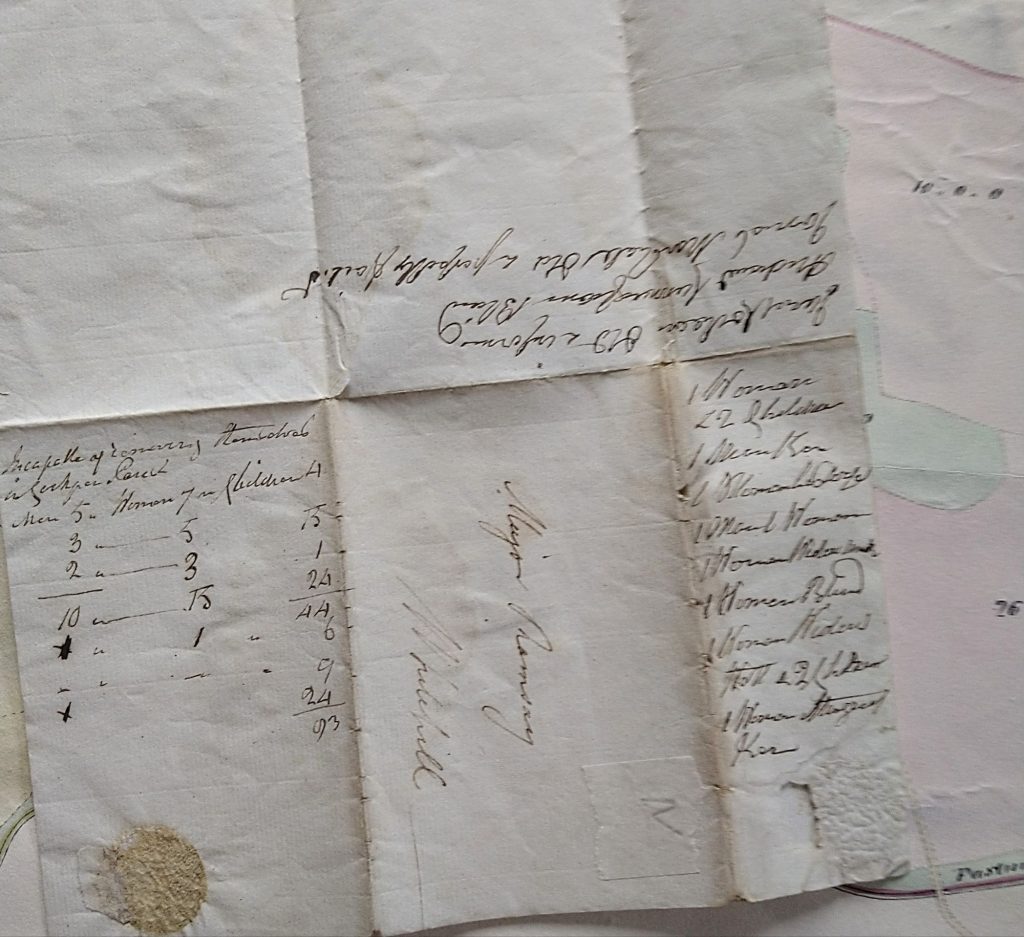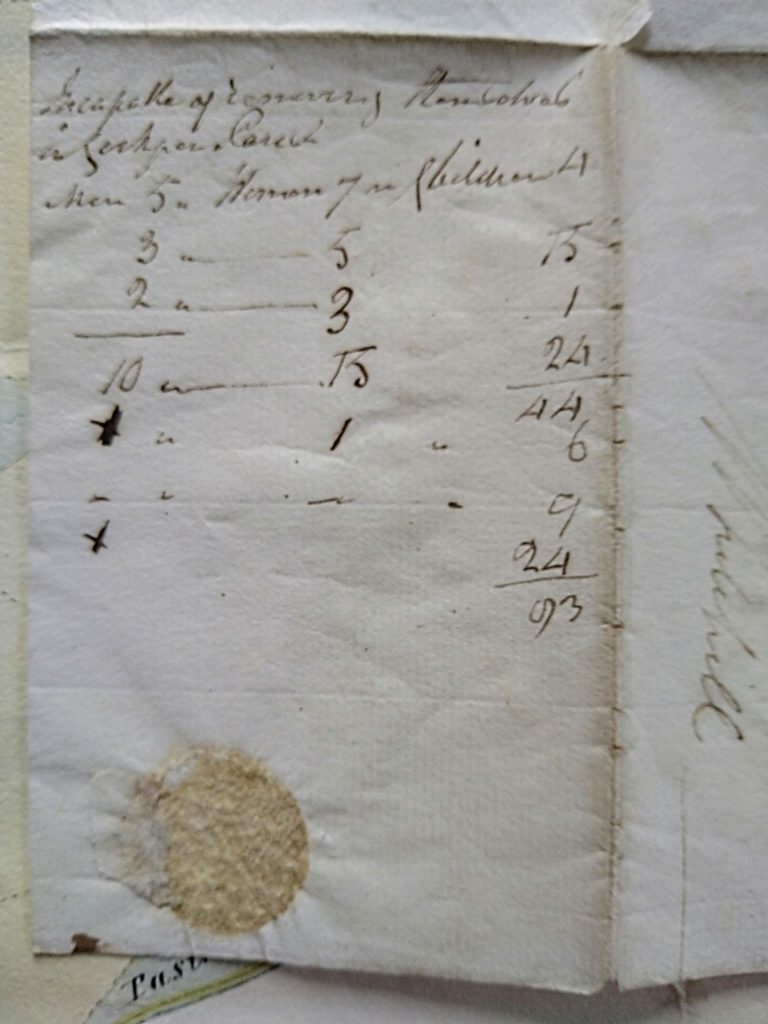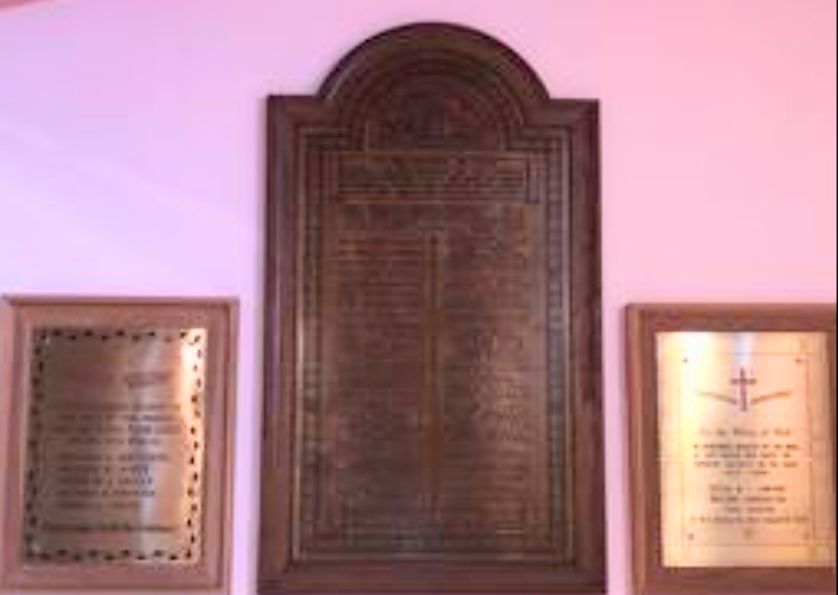Widows, babies and the blind
The defence strategy adopted in 1798 was to present the invaders with a desolate hostile landscape, empty of people, animals, houses and crops. The Pioneers were instructed to destroy ovens, roofs, roads, and bridges. Hence the interest in the number of carts available for evacuation purposes. A list scribbled by Major Ramsay on the back of a letter shows his concern.

Ten vulnerable women, widows, blind, infirm, or with small children, and two men are cited. He tots up the final numbers of those “incapable of removing themselves in Cockpen Parish”, and the figures are stark: 12 men, 16 women, and 93 children.
How many carts would they require, and where would they go?
Thankfully, the French invasion never reached Scotland, and the Major’s logistical skills were not put to the test.

However, the schedules provided the government with a great deal of information. One effect was to establish links between villages and recruitment sergeants. This had enduring consequences for communities in Midlothian, and Scotland generally.
